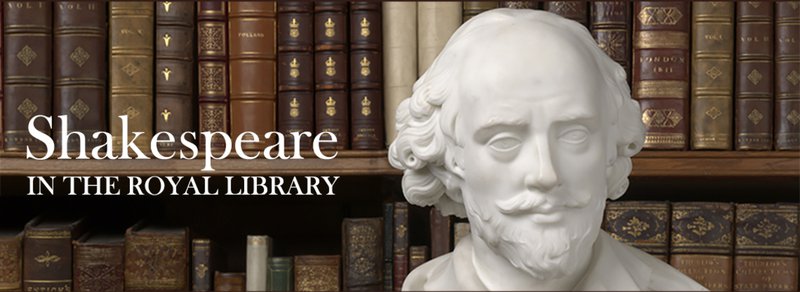Shakespeare in the Royal Library
An exhibition celebrating Shakespeare’s longstanding association with the town of Windsor and the royal court.
Saturday 13 February 2016 - Sunday 11 December 2016
Windsor Castle
Review by Emma Brill, MA Shakespeare Studies
Shakespeare in the Royal Library, which opened at Windsor Castle on Saturday 13th February 2016, charts the long-standing connection between Shakespeare, the monarchy, and Windsor. With over five hundred works of Shakespeare in the castle’s Royal Library, including the first three published Folios, this exhibition provides a glimpse into some of the Royal Collection Trust’s key pieces of interest. The exhibition examines how generations of monarchs have personally responded to the playwright’s works, from Elizabeth I to Elizabeth II.

One of the main highlights of the exhibition is Charles I’s own copy of the second Folio, published in 1632. With evidence to suggest that Charles read this edition of Shakespeare whilst imprisoned during the English Civil War, the content page includes annotations produced by the King’s own hand. Next to the entry for Twelfth Night is the name ‘Malvolio,’ and Much Ado About Nothing is remembered by the names ‘Benedick and Beatrice,’ perhaps suggesting a special interest in these particular characters. Such a personal response to the play is also illustrated by Queen Victoria’s, or Princess Victoria, as she was in 1834, pencil sketch of the balcony scene in Romeo and Juliet which she drew when she was aged fifteen.
Queen Victoria’s love of Shakespeare seemed to last into her adult years, as demonstrated by her daughter Princess Alice’s watercolour drawing of Ophelia in Act IV, Scene V of Hamlet, painted for her mother as a birthday gift in 1859. The Windsor Theatricals, a company which included the Victorian actor Charles Kean, performed Macbeth at Windsor Castle on 4th February 1853, in front of the Queen herself. Her diary entry for that date provides details of the performance, including insights into costumes and set. The Queen described the performance in her diary as ‘…a most interesting, thrilling and heartrending play.’
The exhibits were not limited to objects owned or created by the Royal family, but also included early modern maps, atlases, and manuscripts from Shakespeare’s time to provide a window into the world in which his plays were written. Personally, the highlight of the exhibition was cartographer Christopher Saxton’s Atlas of England and Wales (1579). It is a large volume, with 34 maps representing English and Welsh counties; its publication illustrates the increased interest in map-making in the Tudor era and especially under Elizabeth I. Although published before Shakespeare came to London and became known as a dramatist, Saxton’s Atlas provides us with an insight into how the early modern world was viewed by Shakespeare and his contemporaries.
Shakespeare in the Royal Library celebrates the playwright’s work in relation to the interests of monarchs from the sixteenth to the twentieth century. The exhibition ends with the display of a commemorative award presented to Queen Elizabeth II in 1997, to mark the opening of the reconstructed Globe Theatre on Bankside, signifying the ongoing relationship between the Royals and the exploration of Shakespeare’s work in recent times.
The exhibition closes on the 11th December 2016.

